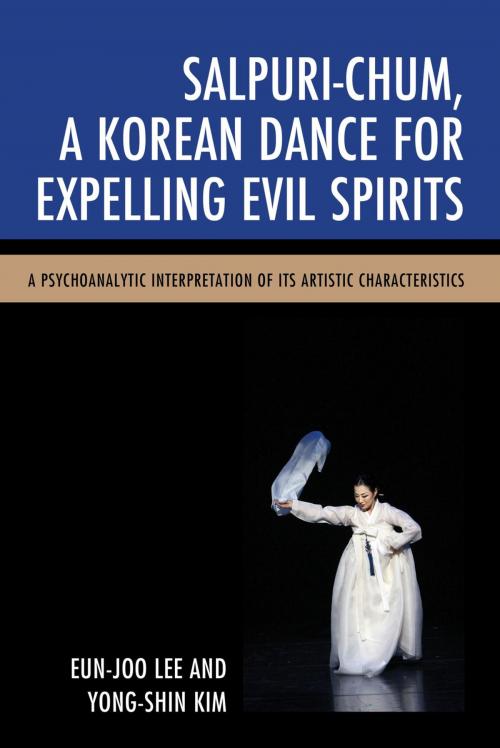Salpuri-Chum, A Korean Dance for Expelling Evil Spirits
A Psychoanalytic Interpretation of its Artistic Characteristics
Nonfiction, Entertainment, Performing Arts, Dance, Folk| Author: | Eun-Joo Lee, Yong-Shin Kim | ISBN: | 9780761868880 |
| Publisher: | Hamilton Books | Publication: | March 7, 2017 |
| Imprint: | Hamilton Books | Language: | English |
| Author: | Eun-Joo Lee, Yong-Shin Kim |
| ISBN: | 9780761868880 |
| Publisher: | Hamilton Books |
| Publication: | March 7, 2017 |
| Imprint: | Hamilton Books |
| Language: | English |
This book is a study of Salpuri-Chum, a traditional Korean dance for expelling evil spirits. The authors explore the origins and practice of Salpuri-Chum. The ancient Korean people viewed their misfortunes as coming from evil spirits; therefore, they wanted to expel the evil spirits to recover their happiness. The music for Salpuri-Chum is called Sinawi rhythm. It has no sheet music and lacks the concept of metronomic technique. In this rhythm, the dancer becomes a conductor.
Salpuri-Chum is an artistic performance that resolves the people’s sorrow. In many cases, it is a form of sublimation. It is also an effort to transform the pain of reality into beauty, based on the Korean people’s characteristic merriment. It presents itself, then, as a form of immanence. Moreover, Salpuri-Chum is unique in its use of a piece of white fabric. The fabric, as a symbol of the Korean people’s ego ideal, signifies Salpuri-Chum’s focus as a dance for resolving their misfortunes.
This book is a study of Salpuri-Chum, a traditional Korean dance for expelling evil spirits. The authors explore the origins and practice of Salpuri-Chum. The ancient Korean people viewed their misfortunes as coming from evil spirits; therefore, they wanted to expel the evil spirits to recover their happiness. The music for Salpuri-Chum is called Sinawi rhythm. It has no sheet music and lacks the concept of metronomic technique. In this rhythm, the dancer becomes a conductor.
Salpuri-Chum is an artistic performance that resolves the people’s sorrow. In many cases, it is a form of sublimation. It is also an effort to transform the pain of reality into beauty, based on the Korean people’s characteristic merriment. It presents itself, then, as a form of immanence. Moreover, Salpuri-Chum is unique in its use of a piece of white fabric. The fabric, as a symbol of the Korean people’s ego ideal, signifies Salpuri-Chum’s focus as a dance for resolving their misfortunes.















